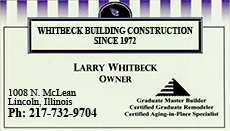| |||||||||||
| |||||||||||
Food prices were flat because a small rise in restaurant prices offset a decline in grocery costs. The price of bread fell 0.2 percent. The cost of meat, fish and eggs dropped 0.5 percent. And dairy prices declined 0.4 percent. The decline in gas and energy costs caused a measure of U.S. wholesale prices to drop by the most in nearly three years in May. Outside that drop, wholesale prices barely rose. Modest wholesale inflation reduces pressure on manufacturers and retailers to raise prices. That helps keep consumer prices stable. Falling prices have begun to boost Americans' inflated-adjusted pay. Inflation-adjusted earnings rose 0.3 percent in May, the government said, only the second gain this year. That occurred because average hourly earnings rose slightly while prices dropped. Over the past 12 months, however, inflation-adjusted hourly earnings dipped 0.1 percent. Without more jobs or higher pay, consumers could be forced to cut back on spending later this year. Consumer spending is critical because it accounts for 70 percent of economic activity.
A small amount of inflation can be good for the economy. It encourages businesses and consumers to spend and invest money sooner rather than later, before inflation erodes its value. The economy is growing but at a sluggish pace. That is keeping a lid on price increases. Slow growth makes it harder for consumers and businesses to pay higher costs. The economy expanded at just a 1.9 percent annual rate in the January-March quarter.

[Associated
Press;
Copyright 2012 The Associated
Press. All rights reserved. This material may not be published,
broadcast, rewritten or redistributed.
News | Sports | Business | Rural Review | Teaching & Learning | Home and Family | Tourism | Obituaries
Community |
Perspectives
|
Law & Courts |
Leisure Time
|
Spiritual Life |
Health & Fitness |
Teen Scene
Calendar
|
Letters to the Editor